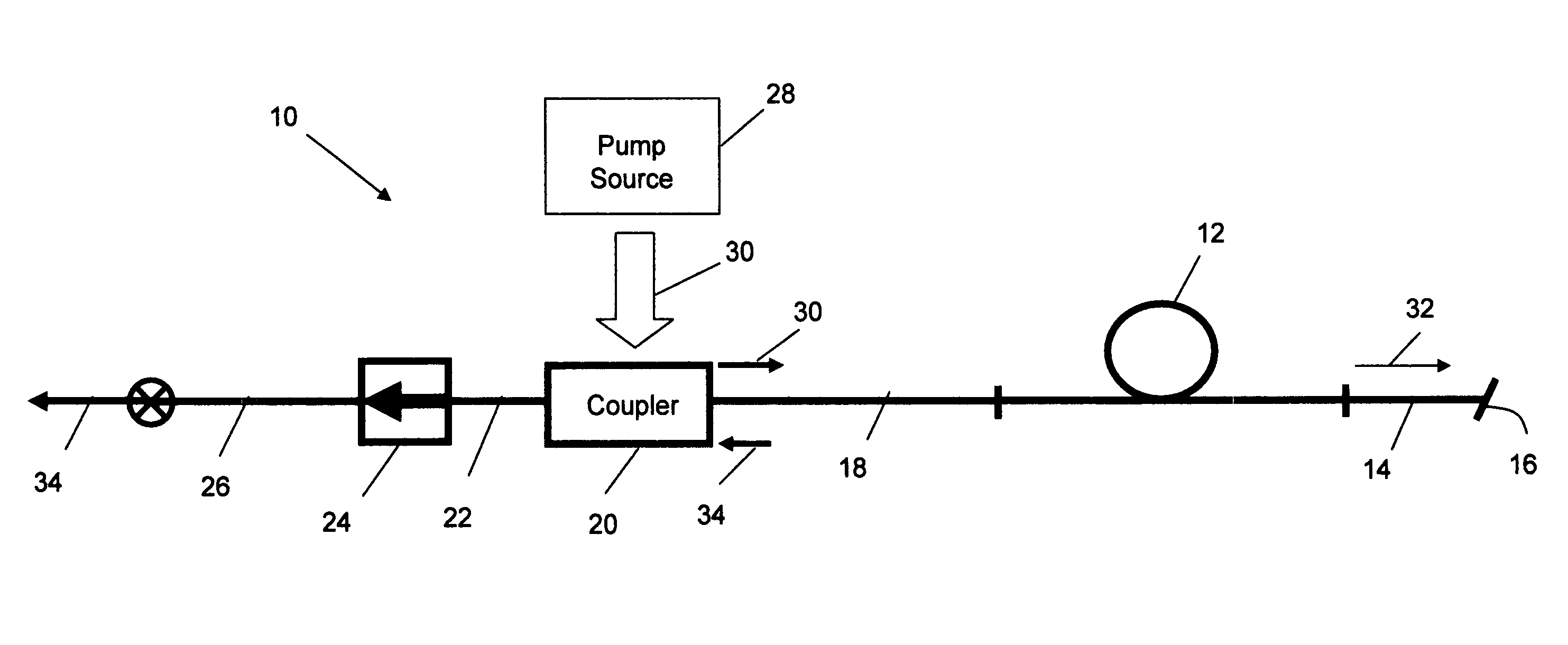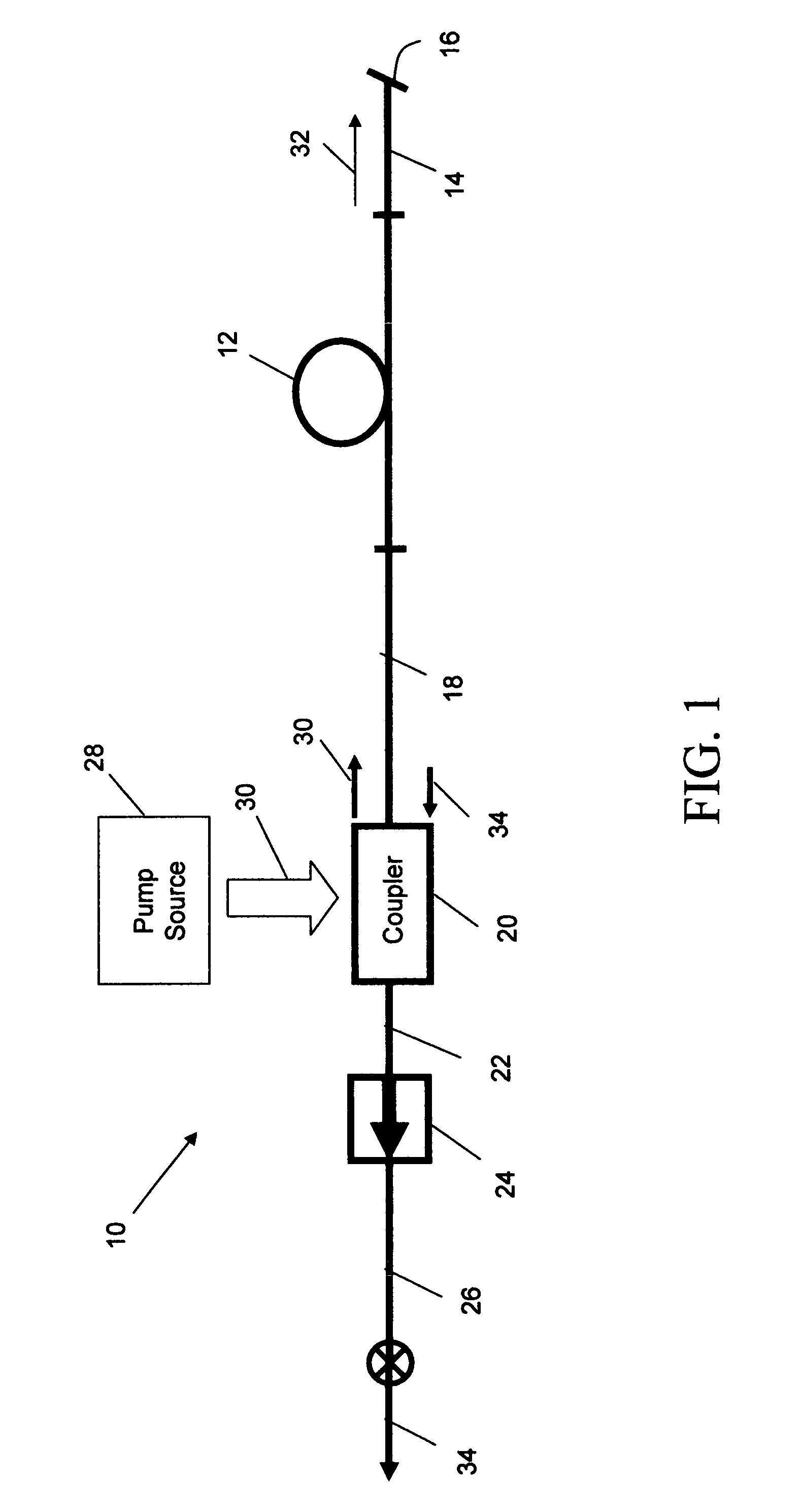1-mum phosphate-glass fiber amplified spontaneous emission (ASE) source
a phosphate-glass fiber and amplified spontaneous emission technology, applied in the field of 1m fiber amplified spontaneous emission (ase) sources, can solve the problems of less stable sources, increased cost, longer coherence length, etc., and achieves high power and spectral stability.
- Summary
- Abstract
- Description
- Claims
- Application Information
AI Technical Summary
Benefits of technology
Problems solved by technology
Method used
Image
Examples
Embodiment Construction
[0023]The present invention provides a high-power broadband 1-μm fiber ASE source with a high level of power and spectral stability that covers wavelengths on the short side of Yb-doped silica. The fiber ASE source is formed from phosphate glass and doped with high concentrations, 0.5-30 wt. %, ytterbium (Yb). The high concentration of Yb dopants provide excess power that allows the fiber ASE source to be configured to provide the output powers, emission bandwidth and stability desired by many applications. The ASE can be configured to emit a nearly Gaussian spectral profile without sacrificing power or bandwidth. The backward emission spectrum of Yb-doped phosphate glass is centered near 1020 nm instead of 1060 nm, which allows the ASE source to cover wavelengths on the short side of Yb-doped silica.
Fiber ASE Source
[0024]As shown in FIG. 1, an exemplary fiber ASE source 10 includes a length, 10-150 cm, of single-mode gain fiber 12 formed from Yb-doped phosphate glass. The fiber inc...
PUM
 Login to View More
Login to View More Abstract
Description
Claims
Application Information
 Login to View More
Login to View More - R&D
- Intellectual Property
- Life Sciences
- Materials
- Tech Scout
- Unparalleled Data Quality
- Higher Quality Content
- 60% Fewer Hallucinations
Browse by: Latest US Patents, China's latest patents, Technical Efficacy Thesaurus, Application Domain, Technology Topic, Popular Technical Reports.
© 2025 PatSnap. All rights reserved.Legal|Privacy policy|Modern Slavery Act Transparency Statement|Sitemap|About US| Contact US: help@patsnap.com



